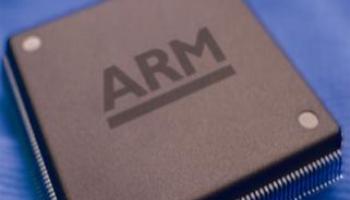ARM Preps For LTE Takeup With New Processors

ARM Holdings is offering two new processors to allow new devices to exploit LTE wireless technology
British chip designer ARM has launched two new processors, the Cortex-R5 and the Cortex-R7, so that smartphones and tablets can utilise 4G mobile broadband technologies such as LTE (Long-Term Evolution).
The arrival of new network technologies such as LTE and HSPA (High-Speed Packet Access) allows operators to increase the data speeds of their mobile networks.
In the United States Verizon launched a nationwide LTE network in December, and devices such as the BlackBerry Playbook are already looking to exploit 4G speeds, although RIM is opting for Sprint’s WiMax network for its tablet device.
 But ARM’s Cortex-R5 and Cortex-R7 chips are designed to cope with the increased bandwidth these networks will provide, and both processors can be implemented as either single or dual cores.
But ARM’s Cortex-R5 and Cortex-R7 chips are designed to cope with the increased bandwidth these networks will provide, and both processors can be implemented as either single or dual cores.
Mobile Broadband
“The binary compatibility of the Cortex-R series processors enables system designers to select the processor and features most appropriate for their current application,” said ARM. “In mobile baseband this will enable developers to transition from current ARM processor-based solutions, which power over 90 percent of current 3G baseband products, to the Cortex-R5 processor for LTE, and on to the Cortex-R7 processor for future LTE-Advanced designs.”
“These two advanced processors bring together more than 20 years of ARM expertise in low-power design with a host of new high-performance and real-time technologies, which enables our Partners to future-proof their designs based on a single consistent architecture,” said Eric Schorn, vice president of processor marketing at ARM.
According to ARM, the Cortex-R5 processor is an extension of the features found in the Cortex-R4 processor. It has been designed to improve system performance, as well as increase efficiency and reliability. “These system-level features include a high priority Low-Latency Peripheral Port (LLPP) for fast peripheral reads and writes, and an Accelerator Coherency Port (ACP) providing cache coherency for increased data transfer efficiency and more reliable firmware,” said the company.
The Cortex-R7 processor meanwhile has been designed for maximum performance, thanks to the introduction of new technology, including out-of-order execution, dynamic register renaming combined with improved branch prediction, superscalar execution and faster hardware support for divide, floating point and other functions.
“This significant development in real-time performance and responsiveness meets the increasing demand for fast data processing and control in the next generation of mobile and storage devices that will be implemented on advanced low-power 28nm semiconductor processes,” said ARM.
Both processors are available for licensing today, and the chips can also be used in other industries besides mobile devices. This includes storage systems or even cars (for its ABS or anti-lock braking system).
Business Challenges
ARM is well known for designing most of the chips used in smartphones and other mobile devices, but it is facing increased competition from Intel as it seeks to move into this market. Intel CEO Paul Otellini has previously said that Intel will become a much larger player in both tablets and smartphones.
For its part, ARM announced in December its intention of taking on Intel with its own server chips in the next five years.
The company has also been at the centre of speculation that Apple could acquire it for its chip expertise, but this speculation was dismissed by both companies.
Recently ARM and IBM announced that they are extending their chip collaboration to develop the next generation of chips for mobile devices. And last month Microsoft revealed that the next version of Windows (Windows 8) will be able to run on ARM-based processors.